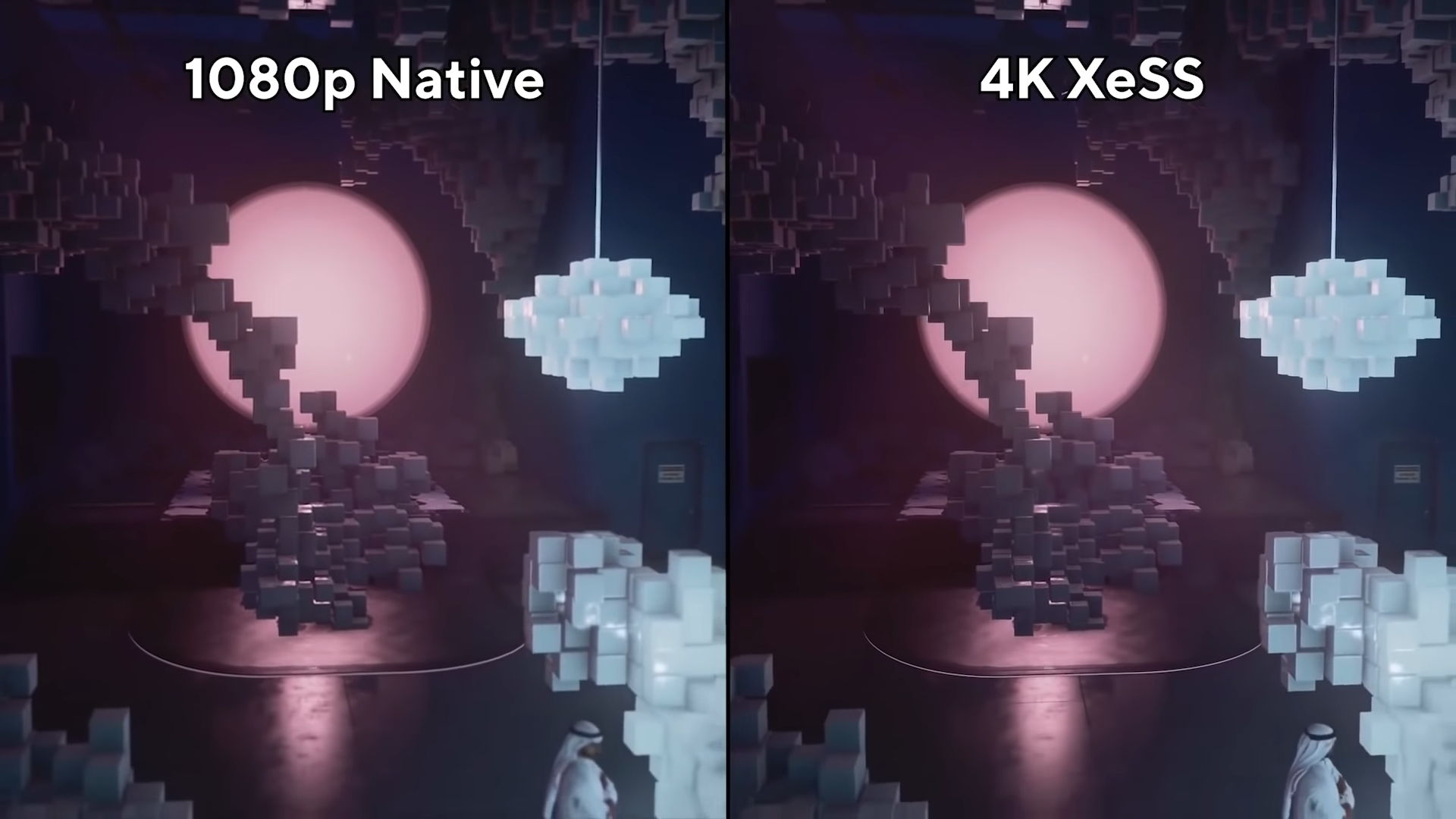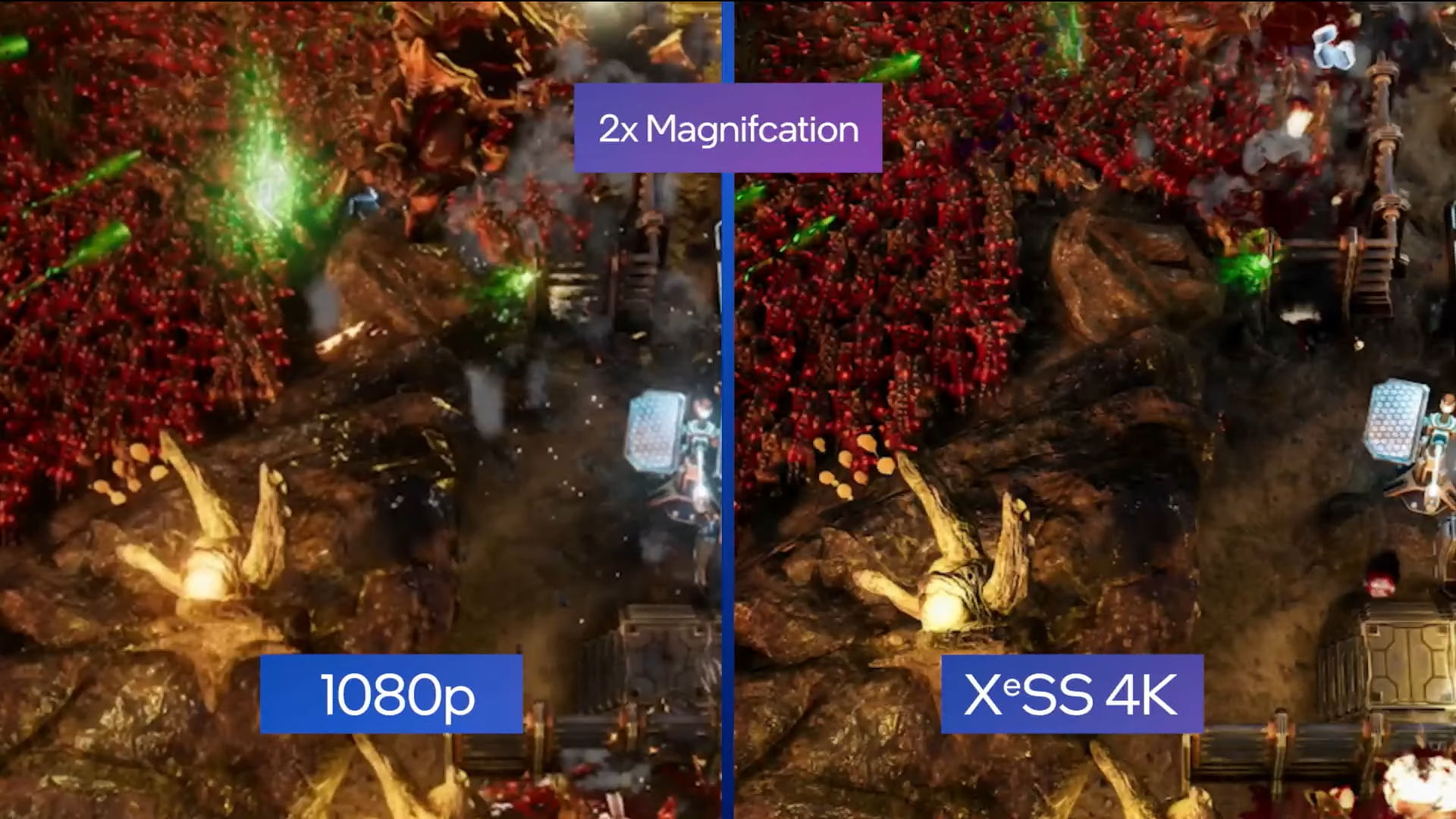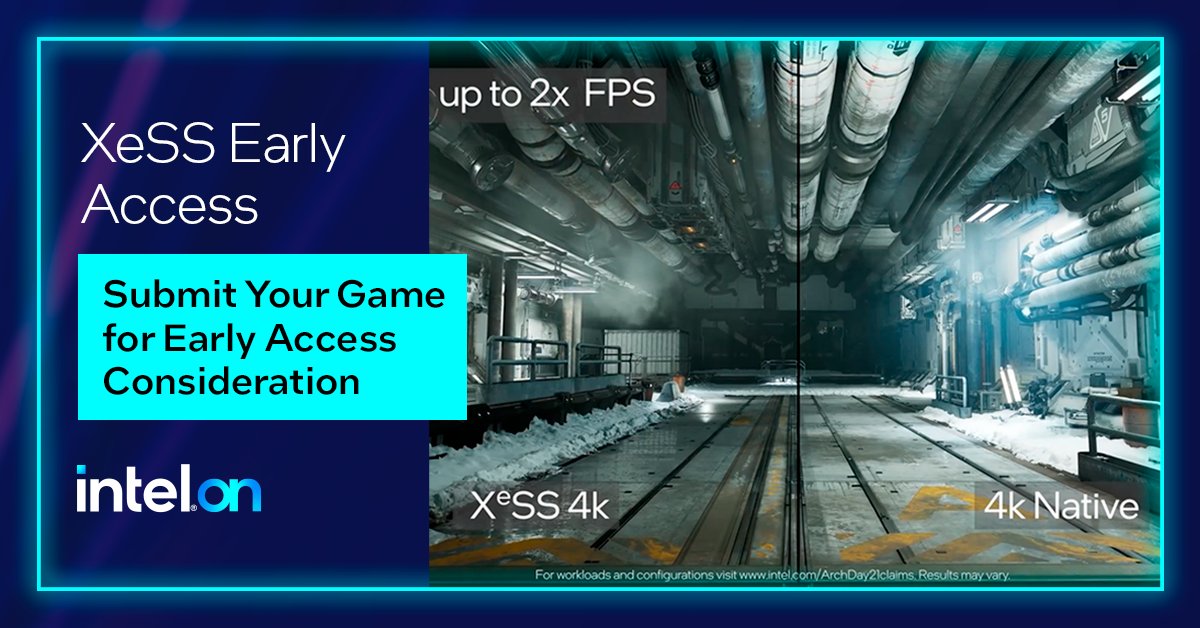Intel XeSS Supersampling Tech Showcased in Hitman 3, Riftbreaker
Marking the first showing of the technology in actual market-available games.
As part of its InnovatiON 2021 initiative, Intel announced a new partnership with Hitman 3 developer IO Interactive and The Riftbreaker developer Exor Studios. The announcement includes the first ever video footage of Intel's XeSS (Xe Super Sampling) working on actual market-available games - specifically, Hitman 3 and The Riftbreaker.
For some reason, Intel elected to upload the video in only 1080p quality; however, the company has committed to updating the upload with 4K streaming quality, which should make it easier to see Intel's tech and its image quality repercussions in finer detail. Some image quality comparisons can still be made, though, and it's clear that XeSS upscaling from 1080p to 4K resolution delivers much better image quality than a simple 1080p render.



The choice of games is also interesting; Hitman 3 is an understandable choice, considering it's a AAA game with a recognizable market presence - it serves as a good showcase and marketing stunt for the technology. It also happens to have been pushed by Intel earlier. Riftbreaker, however, was a game developed in close collaboration with AMD, and which already implements AMD's Fidelity FX Super Resolution (FSR) tech as a supersampling algorithm for improved performance. It's interesting that Intel would choose this relatively small-scale game as another showcase for its XeSS technology; perhaps Intel is setting the field for comparisons to be made between FSR and XeSS - and if this is indeed Intel's strategy, this means the blue giant is confident in winning any pixel-peeping tests that come up comparing both technologies.
That Intel is already showcasing games with working implementations of XeSS bodes well for the technology's future adoption; Intel knows they have a lot of time on their hands to strengthen developer relations and increase the attractiveness of their graphics technologies on the road towards its Arc Alchemist GPU launch in 2022.
It's also good news regarding the current state of development for XeSS that Intel announced its XeSS DevMesh program. It's an Early Access way of testing and implementing the supersampling technology, whereby developers can submit any game they're currently developing as a candidate for XeSS integration. This is a clear way for Intel to attract more developer interest and expand their technology footprint before their mainstream GPU launch proper, and it's likely a reflection of the company's latest hires.

Intel will likely be launching XeSS (and allow for XeSS implementation) on games upon released of their graphics architecture; there isn't much that Intel would gain in letting the technology out in the wild earlier. Its open nature (which is more like AMD's FSR than Nvidia's DLSS) means that any AMD or Nvidia GPU would be able to take advantage of the technology until Intel's own cards make it to the market. Intel would surely gain image recognition in the graphics technology world by doing this, but they would also be somewhat encouraging users to go with an Nvidia or AMD card before the release of Arc.
Get Tom's Hardware's best news and in-depth reviews, straight to your inbox.

Francisco Pires is a freelance news writer for Tom's Hardware with a soft side for quantum computing.
-
hotaru.hino If the purpose is to say you can get near 4K quality while rendering at 1080p, then where's the native 4K image so we can compare how good the thing actually is?Reply -
OMGPWNTIME Reply
"Intel elected to upload the video in only 1080p quality; however, the company has committed to updating the upload with 4K streaming quality, which should make it easier to see Intel's tech and its image quality repercussions in finer detail. "hotaru.hino said:If the purpose is to say you can get near 4K quality while rendering at 1080p, then where's the native 4K image so we can compare how good the thing actually is? -
Jim90 Ya gotta love Intel - deliberately softening/blurring that 1080p footage!Reply
This drive to push upscalers on us is concerning. It won't be long before someone uses this as hidden tech in order to 'speed up' rendering against the competition...always ON? - no thank you, the user must make that choice! -
TerryLaze Reply
Is it that or does 1080 blown up to 4k just look like that without an upscaler?Jim90 said:Ya gotta love Intel - deliberately softening/blurring that 1080p footage!
I mean what's the point to upscale to 4k if you don't have a 4k display. -
hotaru.hino Reply
It's not the resolution of the video I'm concerned about. It's that they're giving us renderings of a 1080p native image and a 4K XeSS image, but they don't give us the 4K native image of the game itself. I've no doubts that you can pretty up a 1080p native image. But if you're going to imply you can get near 4K native quality, then provide a 4K native image.OMGPWNTIME said:"Intel elected to upload the video in only 1080p quality; however, the company has committed to updating the upload with 4K streaming quality, which should make it easier to see Intel's tech and its image quality repercussions in finer detail. " -
derekullo Reply
If you render something at 4k and then downscale to a lower resolution you can drastically reduce the amount of aliasing for very straight edges.TerryLaze said:Is it that or does 1080 blown up to 4k just look like that without an upscaler?
I mean what's the point to upscale to 4k if you don't have a 4k display.
This is superior to all forms of anti-aliasing in terms of quality, although you do take a massive fps hit. -
spongiemaster Reply
Sure, but the images still serve a purpose. Does upscaled look better than native 1080p? Then you're getting better image quality with basically the same performance. There are 2 ways to look at these upscaling technologies. Similar image quality with better frame rates, or better image quality with the same frame rate.hotaru.hino said:If the purpose is to say you can get near 4K quality while rendering at 1080p, then where's the native 4K image so we can compare how good the thing actually is?
